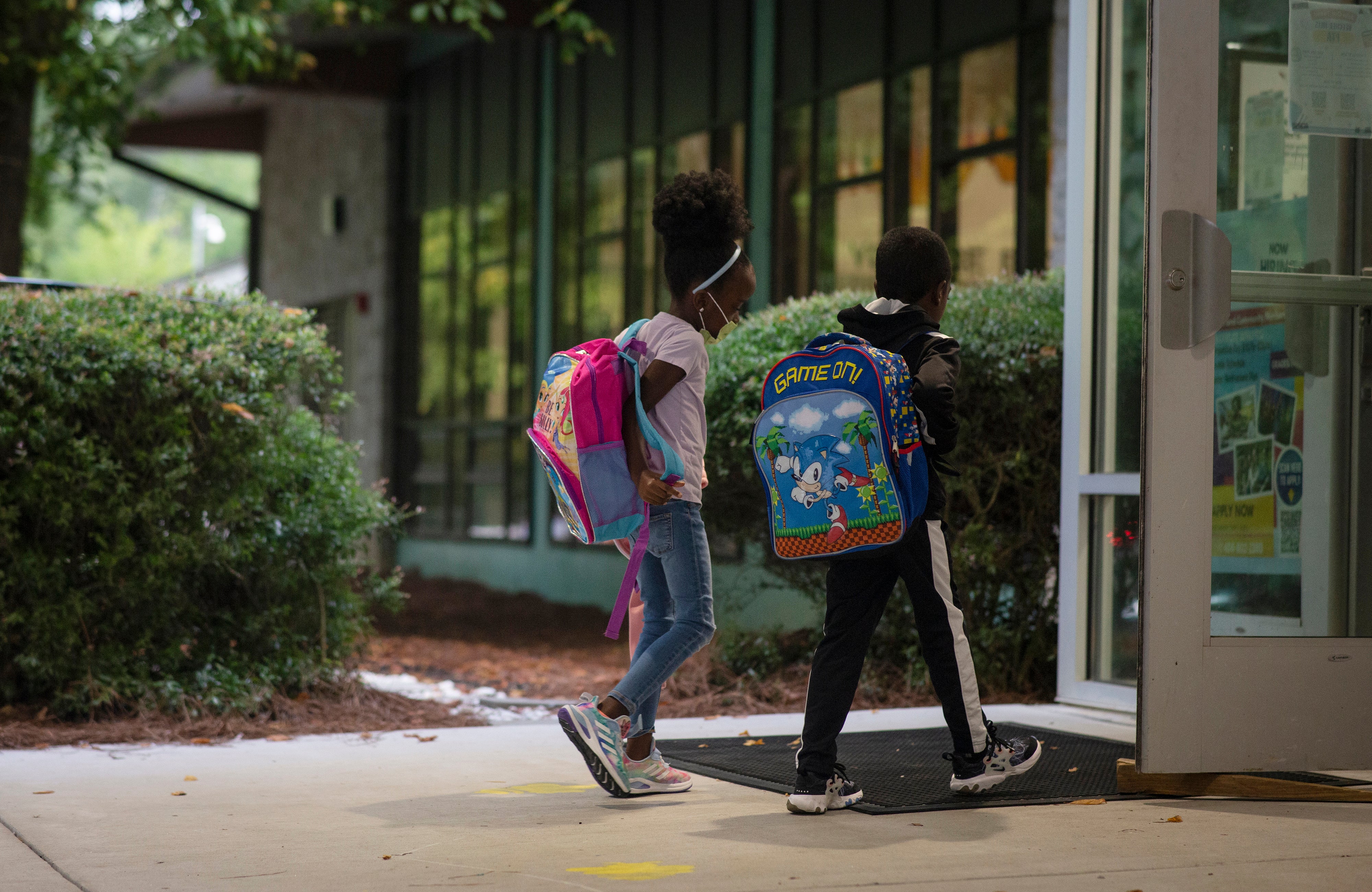LOCALIZE IT: Safety, mental health among top school concerns

EDITORS/NEWS DIRECTORS:
American children have returned to classrooms for the start of another academic year — the fourth to be affected by the COVID-19 pandemic, which hit when this year's seniors were first-year high school students.
As worries about the virus begin to recede — along with quarantines and the staffing crunches they cause, educators hope — schools are confronting the legacies of the pandemic. They're staring down strains on mental health, large numbers of students who are behind academically, threats to school safety and heightened political tensions around how and what they teach.
Here are some of the top stories to follow this school year and some tips on how to cover them locally.
STUDENT MENTAL HEALTH
Signs of distress among American children were on the rise before the pandemic, which only added to the crisis in youth mental health. With federal pandemic relief money, districts around the country have made new investments in mental health specialists, new coping tools and curriculum that prioritizes emotional health. Will it be enough?
Angles to consider for local coverage include whether school districts are seeing increases in behavioral and mental health challenges. Ask for data such as calls to a crisis hotline or interventions with suicidal students.
As a new academic year begins, what did schools learn last year about how to best address students' needs, and what are they doing differently this year? Are they hiring new mental health experts or other staff, or trying new, creative approaches? Have they been able to fill the openings they have for counselors?
A former school mental health practitioner from the National Center for School Mental Health joined AP for a Twitter Spaces on student and teacher well-being. Hear her tips for parents and teachers and advice on what schools can do, or grab a quote for a story — just link to the Twitter Spaces and cite the AP interview.
Want to direct parents to resources for their kids' mental health? Check out: https://nap.nationalacademies.org/resource/other/dbasse/wellbeing-tools/interactive/
Looking for more story ideas, resources and experts to interview? Check out our entire Localize It on student mental health.
SCHOOL MEALS
Free school meals were made available to all American public school students during much of the pandemic, but that program ended this summer. Families with lower incomes will still be able to qualify for free or reduced-price meals, as they did before the U.S. government temporarily offered them to all at no cost.
At a time of high inflation, the change will have an impact on many families’ budgets, although states including California, Maine and Vermont have stepped in to cover the cost of school meals for all kids.
Ask your school districts and state lawmakers: Are they doing anything to make school meals more accessible? Ask local food banks: Are they seeing any change in demand from families? Stop by the food bank to see if parents or guardians of kids can talk about having to provide their lunches again.
The USDA has information about the school lunch program at: https://www.fns.usda.gov/nslp. Advocacy groups such as the Food Research & Network Group ( https://frac.org/ ) and No Kid Hungry ( https://www.nokidhungry.org/ ) also have their own reports on the effects of federal rule changes.
COVID-19
There is hope that this academic year, at last, is when educators will begin to focus in earnest on helping students recover from and move on from pandemic disruption. Social distancing restrictions, mask requirements and limits on gatherings are fading away.
Still, the rise of highly transmissible COVID-19 variants, combined with continuing struggles to find enough substitutes and support staff, brings the risk of new rounds of disruptions.
What is your local district doing to protect against the kind of outbreaks that sideline large numbers of educators? Some districts around the country have pointed to expanded access to rapid tests, improved ventilation systems and new staff hires. Others haven't changed much.
On request, Burbio can provide data on how many days of in-person schooling your district lost because of pandemic-related disruptions in the last school year. ( https://about.burbio.com/school-opening-tracker )
SCHOOL SECURITY
The shooting massacre last spring in Uvalde, Texas — the country's deadliest school shooting in years — spurred new scrutiny of school security and promises to make classrooms safer. Opportunities abound to explore how officials in your area are responding on state and local levels.
Individual school districts have made investments in upgrades including wearable panic buttons. Has anything changed significantly in your local school system? Have school board meetings or other community meetings held discussions on whether such measures are worth the money?
At the state level, how have officials followed through on pledges on school security in the aftermath of the Uvalde shooting? As a sampling, here is a look at how state governments have responded in 11 states.
OTHER LOCALIZE IT GUIDES
For back-to-school, AP also published Localize It guides on:
— Shrinking schools: Enrollment at urban schools continues its pandemic decline. Use the Chalkbeat/AP analysis of enrollment at the country's largest school districts.
— College readiness: Students rushed through high school because of the pandemic are finding they're not prepared for college. What is your local college doing to make sure they succeed?
— Holding students back: The number of students held back to repeat a school year rose in states across the country during the COVID-19 pandemic, according to an Associated Press analysis. Use our state-by-state analysis to get numbers from your region.
___
Localize It is an occasional feature produced by The Associated Press for its customers’ use. Questions can be directed to Katie Oyan at koyan@ap.org.
Subscribe to Independent Premium to bookmark this article
Want to bookmark your favourite articles and stories to read or reference later? Start your Independent Premium subscription today.
